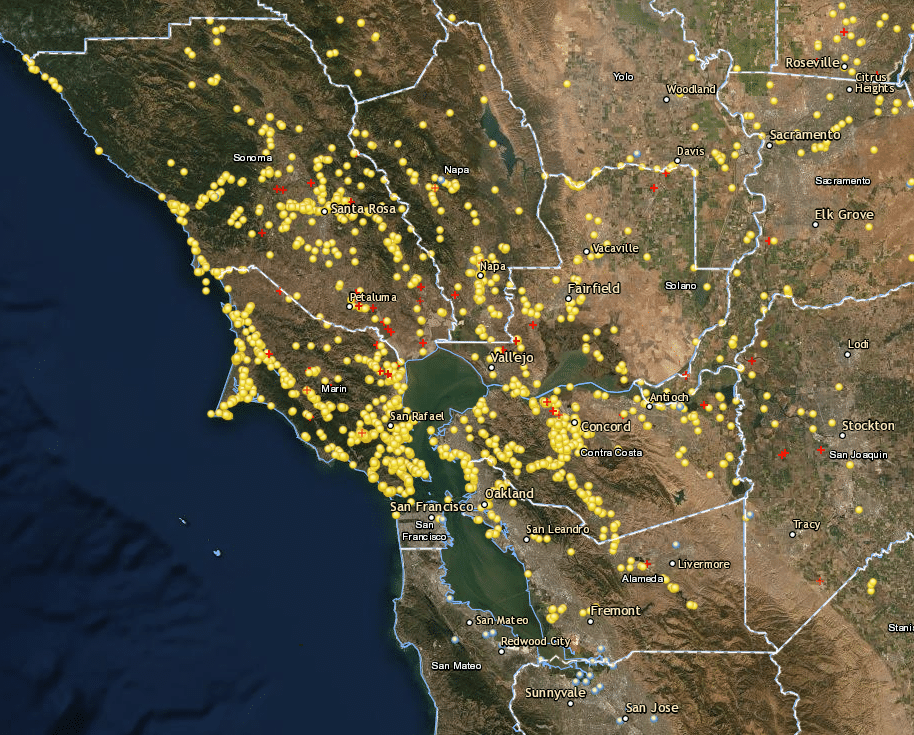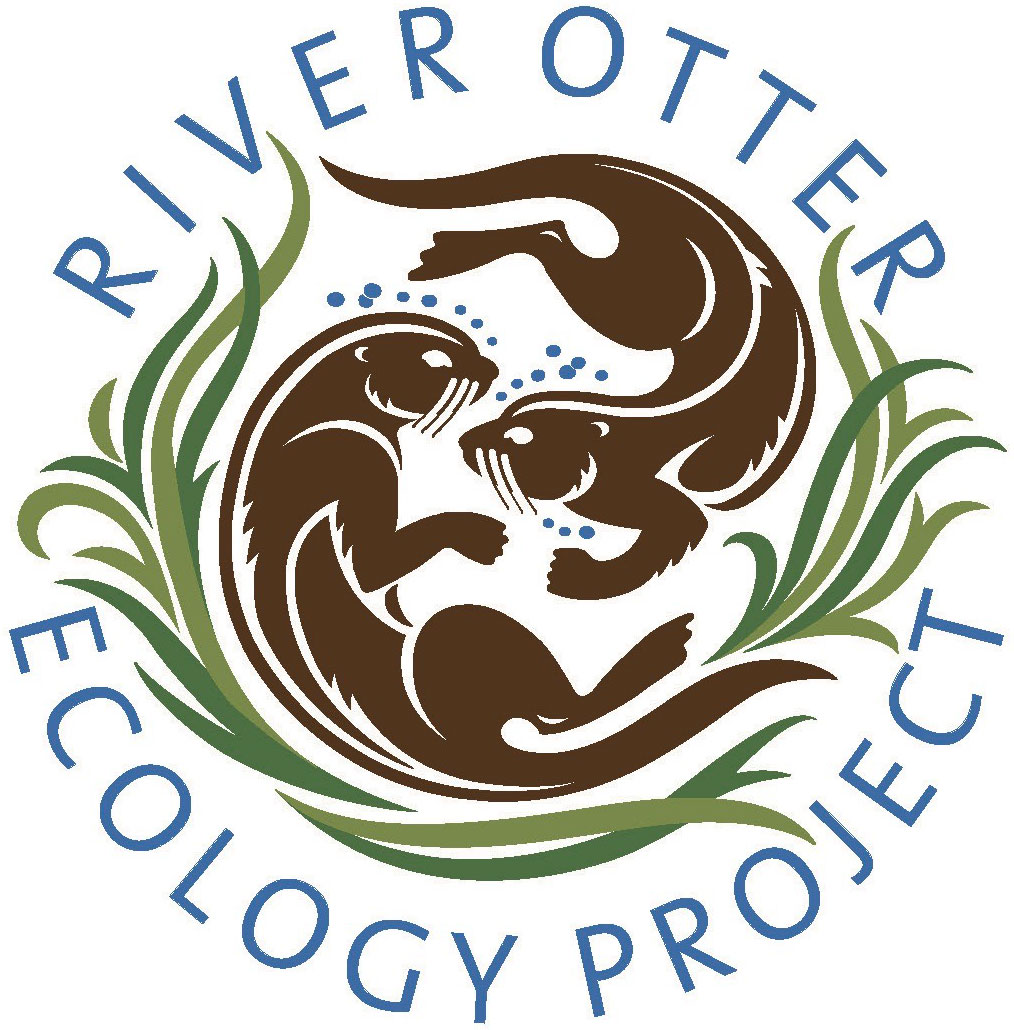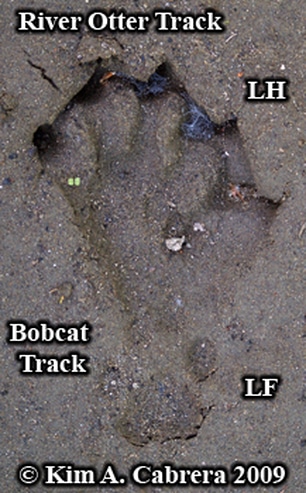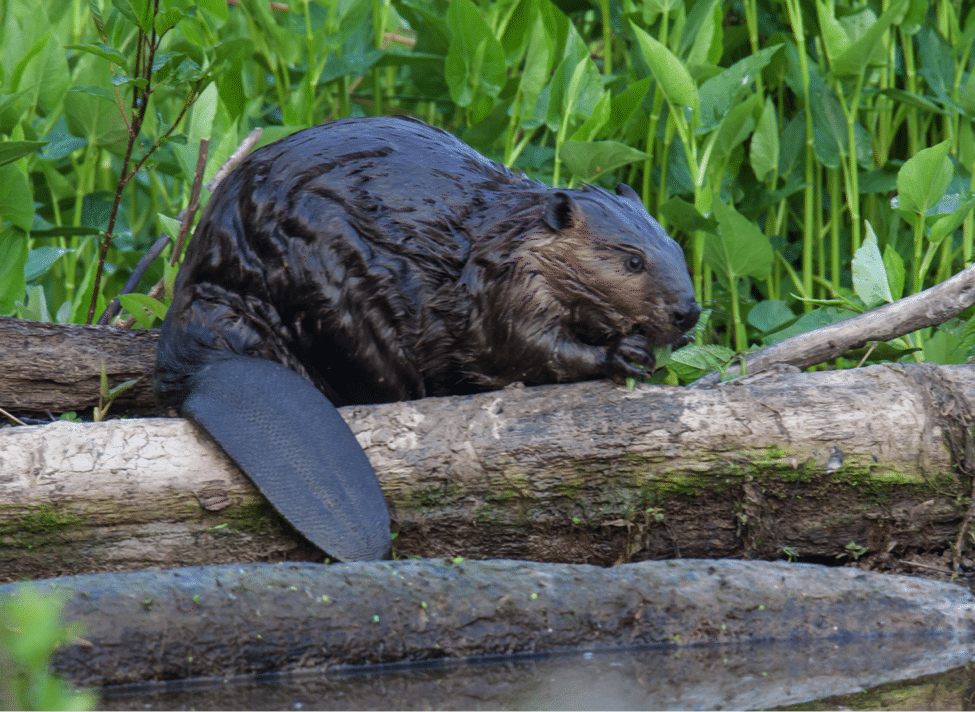Become an Otter Spotter
Seen an otter? Please scroll down to the Submit Your Sightings tab.
We engage people in supporting waterways in their own communities.
Otters for Waters is a nationwide conservation initiative, aiming to protect and support waterways across the country, with river otters as charismatic ambassadors. Building on more than decade of community science, research, education, and advocacy, we are expanding our Otter Spotter program, which mobilizes people to document otter sightings, enabling them to take an active role in local conservation efforts.
The Intent
To use the skills, knowledge, and technical expertise gained through the Otter Spotter program nationally, in order to increase our reach and influence throughout the United States in support of watershed conservation.
The Vision
We envision a national web of connected projects using our collective data and the appeal of river otters as ambassadors for healthy waterways. River otters are indicators of waterway health and symbols of the success humans can achieve in restoring ecosystems for all species, including ourselves.
The Plan
Partner with local NGOs across the nation dedicated to watershed conservation. We have launched pilot programs in Virginia, Arizona, Utah, and Louisiana. We use their on-the-ground knowledge and connections along with our platform and expertise to help partners achieve their goals.
The initiative’s expansion is rooted in collaboration. Partnering with local organizations, Otters for Waters provides training, technical support, and tools to empower partners in their conservation goals. Partners provide the on-the-ground knowledge of the needs of local waterways.
Our expansion vision is to create a national network of conservation advocates, leveraging the appeal of river otters to spark public interest and support waterway restorations and policies. Like all changes, it starts with a few drops that grow to ripples then waves of change. This is a big change for a small organization, a big lift, and one we are confident of bringing to fruition.
MEET OUR PARTNERS!
Elizabeth River Project, Norfolk, VA
Friends of the Verde River, Cottonwood, AZ
Utah sightings are not publicly mapped, to protect otters, but we record, save, and use the sightings. Please input your sightings here:
Otter Spotter is a community science program made to collect, map and save otter sightings. We accept sightings from anywhere in North America. Anyone can collect a sighting!
If you see an otter, take a photo if you can (it doesn’t have to be a good one), and fill out the sightings form. If the sighting is in a sensitive area, let us know and we won’t make it visible. We’re all about collecting data while protecting otters.
For stories, photos, video, and all the how and why of Otter Spotter, please see our interactive Story Map. Thanks to our Otter Spotters, we have important information about otter range that wasn’t previously available.
Submit Your River Otter Sightings
Your observations will help direct our conservation work across the nation, so please provide accurate information, and as much detail as you can. You can also upload photos. If you have video, please email [email protected] We will contact you to obtain the video. And be sure to check out the River Otter Sightings Map (see tab above).
IMPORTANT: We do not publicly post sightings in some areas to protect otters. It does not mean there are no otter sightings. If you would like to post without your sighting becoming public, let us know and we will honor your request.
FILL OUT THE SIGHTINGS FORM HERE.
A note about the form:
Most fields require a response (* = required) for the form to be submitted. When you submit the form successfully you will see a confirmation page with thanks. If you don’t see that page, look back through your form to make sure all the fields are filled and entered correctly, then hit SUBMIT again.)
IF YOU FIND A DEAD OTTER
Please fill out the sightings form above. Be sure to zoom in as far as you can on the map. Tell us whether the otter is a fresh carcass, old, or has been predated if you have that information. Give exact instructions for where to find the otter, including nearest city or town, nearest cross street, GPS coordinates if possible, what side of the street it’s on and whether it is accessible on foot, i.e., is it behind a locked fence, or somewhere difficult to reach. If possible, we will collect the carcass for necropsy (animal autopsy). The information will help us understand causes of mortality in otters. We also share information with agencies to help identify hot spots for car strikes. We use the information to support better crossings for otters.
River Otter Sightings Map
Explore the map below for areas of river otter sightings submitted by otter spotters from across the nation. The sightings on the map are not meant to show every sighting we receive, but instead, to show the areas where otters are seen and to show clusters of sightings. When viewing the larger map, you can click on the dots for more information about each sighting.
How do healthy watersheds help ensure otters and people continue to thrive? Check out our Understanding Watersheds page.
View larger map provides a more interactive experience.

Northern and Central California River Otter Range Map
Understanding river otter range, or the area that river otters inhabit, is an important tool to help us with land use planning, restoration decisions, and toxic spill planning and response. Prior to our Otter Spotter community science effort beginning in 2012, river otters were not known to inhabit the SF Bay Area. The new range map, published by the California Department of Fish & Wildlife, uses the information gained from our hundreds of Otter Spotters to update the information. 4,100 square miles of river otter range have been added.
Enjoy the map, and many thanks to all the Otter Spotters!
Be sure to click on the LAYERS ICON on the map 
Click here to see a larger version of the map.
The Otter Spotter's Field Guide
Click on any photograph to see an enlarged version.
OTTER SIGNS AND TRAILS
Toilet or latrine sites: These are often found on high points along the banks of streams, bays or along crossover trails between water bodies. The vegetation is usually flattened out, and the area may contain numerous piles of otter scat, often comprised of fish scales or crayfish parts.
Slides: The most obvious and best-known evidence of otters — mud or ice/snow. Riverbank slides 8" (200 mm) wide, much wider with heavy use. Snowslides 12" (300 mm) wide or wider, up to 25' (7.5 m) long; often on flat ground, sometimes pitted with blurred prints where otter has given itself a push for momentum.
Wallows or rolling places: These occur along water edges, crossover places and marshes, and are recognized by an area where the grasses or dirt have been flattened and raked or scratched into several small, twisted piles. Flattened areas may be up to 2 meters (6.5 ft) wide.
Otters like to travel from one small water body to the next looking for food. Any small ditch, creek, or stream that connects to another body of water is likely to be an otter travel-way. This is especially true of small drainages that lead to or from a marsh, lake, or pond where the otters like to hunt. Dogs often find otter scent-marking places and roll in them.
LEFT: Otter slide with tracks
Photo: Megan Isadore
RIGHT: Otter holt (den) with slide
Photo: savingotters.wildlifedirect.org
OTTER TRACKS
An otter track is 3 1/4" (80 mm) wide or more, about 4” long, and often show only heel pad and claws. Toes fan out widely, but webbing rarely prints, except in mud. Running stride is 12–24" (300–600 mm).
Look for tracks on muddy river banks around ponds, streams, lakes, rivers, marshes and beaches near fresh water.
The photo at left shows where an otter stepped on top of a bobcat track. The otter's large left hind foot landed on a left front bobcat track. The webbing on the otter track left a clear imprint here.
The bobcat track in the photo at left can be seen in the photo at right, along with four otter tracks.
Photos: © Kim A. Cabrera 2009
LEFT: This is the left front track of a river otter. The long heel left an imprint here, which does not always happen. Notice also the lack of claw marks. Sometimes, the claws do not show in tracks. There are four pads on the "heel" which are visible in this photo. The inner toe is the smallest and is set further back in the track.
Photo: © Kim A. Cabrera 2010
RIGHT: Otter Tracks in Sand, Point Reyes National Seashore
Photo: Sharon Barnett
OTTER SCAT
Irregular, sometimes short, rounded segments, sometimes flattened masses, containing fish bones, scales, or crayfish parts; when fresh, often greenish and slimy. Scat most often found on banks of stream or pond, on logs, or on rocks in water.
Otter Spotter Etiquette, Safety, and Essential Field Gear
Etiquette and Safety
- Avoid approaching and don’t bother otters if you encounter them. If otters are comfortable around you, they’ll ignore you. If they’re uncomfortable, they will stop doing what they’re doing and move away. Otters will bite if threatened or attacked.
- Be aware of your surroundings and don’t stray onto private property without permission. Respect all posted signs.
- Tread Lightly! When approaching a site that might contain tracks or scat, or be a sensitive area, approach it like an ecological detective. Walk softly, don’t trample the area or the otter clues. Take photographs and notes instead of collecting or disturbing resources. Don’t ever collect any live animal – trapping or relocating wildlife is illegal in California.
- Don’t collect any resources from protected lands such as National Parks and State Parks. Instead, take photos.
- Always be conscious of your safety, don’t get yourself into dangerous situations (especially when in the water or on the shoreline).
Essential Field Gear
(assuming you’re out hiking/boating and you have all the rest)
- Binoculars
- Camera w/ zoom lens (if possible)
- Cell phone for GPS coordinates and photos
- Notebook for recording your observations
How to Identify a River Otter
Click on any photograph to see an enlarged version.
Where to look: Any waterway you’re near! River otters are happy in fresh, brackish and salt water. They’re often seen in coastal areas near the mouths of rivers and creeks. They’re often seen in marshes and wetlands. They’re a little harder to see in vegetated rivers but keep looking, especially when boating. They’re often found in lakes…look where the fish are. In-crowd hint: Check out our otter spotter map to see where they’re often reported!
When to look: River otters are most often seen at dusk and dawn, but can be seen at any hour of the day or night.
What do I look for? Look for large ripples on the surface of the water, lots of bubbles and a 3 to 4 foot-long animal with a long thick tail. The tail is about a third of the body length of the otter. Otters are dark and sleek in the water. Otters have a large black hairless nose (rhinarium).
How do otters swim and move? In the water, river otters do not swim on their backs like sea otters. They can swim along with just their heads showing, they can dive and roll and they often stay underwater for up to 15 or 20 seconds. They also “periscope,” meaning raise their necks far out of the water to see farther. When swimming, they usually carry their bodies just under the surface. They’re very elusive and can “disappear,” into the water, brush, rocks or under overhanging vegetation.
On land, river otters are agile, can run quickly and climb trees. They’re small and narrow-bodied, with longer back legs than forelegs, so they move with a humping gait. They’re often seen running across beaches, or along paths near water.
There’s a superb Otter/Beaver/Muskrat article with photos and descriptions here.
SEA OTTER (Enhydra lutris)
In California, sea otters are most often seen around Monterey Bay and Elkhorn Slough. Occasionally we see them in the SF Bay Area. Sea otters are twice the size of river otters, and are never far from the ocean. They have enormous back flippers, and often swim on their backs with their big flippers sticking out of the water. Their tails are short and not as muscular as river otters. They are clumsy on land.
This video by Tom Reynolds shows sea otters first, then river otters. The differences will become obvious!
MUSKRAT (Ondatra zibethicus)
Muskrats are rodents, about 18 inches long, with a thin tail. Like beavers, they swim straight across the water, with their backs at or slightly above water level, without diving and rolling, until it’s time to submerge.
Typical muskrat swimming; note the thin long tail.
Here’s a nice muskrat video.
BEAVER (Castor canadensis)
Beavers are rodents with large orange teeth. They have a very distinctive large, flat tail which slaps the water when they’re startled. Beavers are burly animals, and weigh about twice as much as river otters. Their fur is clumpy when wet. Like muskrats, their bodies are usually at or slightly above water level when they swim.
Here’s a gorgeous beaver, look at that tail!
Here’s our friend Heidi of Worth A Dam in a wonderful video showing the difference between otters and beavers.
HARBOR SEAL (Phoca vitulina)
Harbor seals are seen in the ocean, bays and marshes. They’re quite fat-looking, because they carry a large layer of fat on their bodies to keep them warm in cold waters. Harbor seals have very large heads and big dark eyes. They startle easily, and dive under water with an enormous splash if you surprise them while kayaking. They’re grayish, with mottled fur, sometimes paler gray toward white.
Here’s a fascinating video of a river otter protecting its prey from a curious harbor seal. Many thanks to the Sonoma County Water Agency for sharing with us!
The River Otter Ecology Project is a registered 501 (c)(3) EIN #45-4997526 non-profit organization dedicated to the welfare of river otters and our watershed. Our organization is not affiliated with any other otter-related research group or community outreach organization.
© 2024 River Otter Ecology Project

















